25+ Optimal Milk Substitutes for Mac and Cheese
When you buy through our links, The Breslin may earn an affiliate commission. Learn more
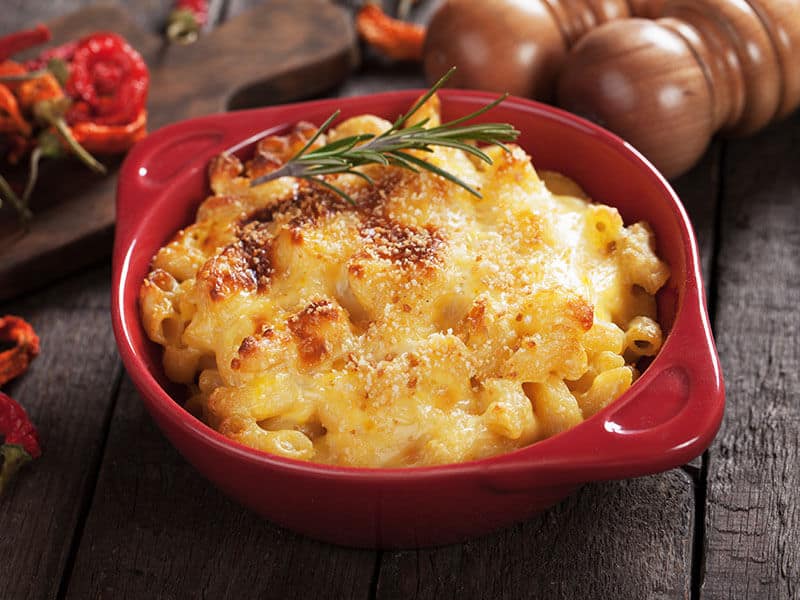
Mac and cheese milk substitutes are something that everyone should notice. There will certainly be times you wish that you know! For example, when you really crave mac and cheese yet just run out of milk!
In some other cases, you love this creamy dish, but unfortunately, you are allergic to lactose. Or you are simply looking for a new vibe for your favorite dinner!
Whatever your reason, this post is definitely helpful for you! An avid mac and cheese lover like me will help you cook this mac and cheese up for sure with 26 great milk substitutes!
What Is Mac & Cheese: Ingredients And Flavor
Before discovering the alternatives for milk – an ingredient in mac & cheese, you should try to learn a little about this dish. Mac & cheese stands for Macaroni and Cheese. It is one of the most popular dishes for the time being.
Macaroni is the round and short pasta. Combining this pasta with rich cheeses and milk, along with some seductive spices, it will become an irresistible delicacy for any fastidious diners.
This cheesy, creamy, and super tasty mac and cheese recipe will blow your mind!
Comparison Table: Mac And Cheese Milk Vs. Substitutes
Make an overview of all the most suitable mac and cheese milk substitutes right now! You will learn the substitution ratio, the basic difference in their texture and taste compared to milk.
26 Perfect Mac and Cheese Milk Substitutes To Bring Out The Ultimate Taste
These best milk substitutes can help you create the tasty macaroni and cheese without noticing the difference! Find out what can be the optimate options instead of regular milk!
1. Oat Milk
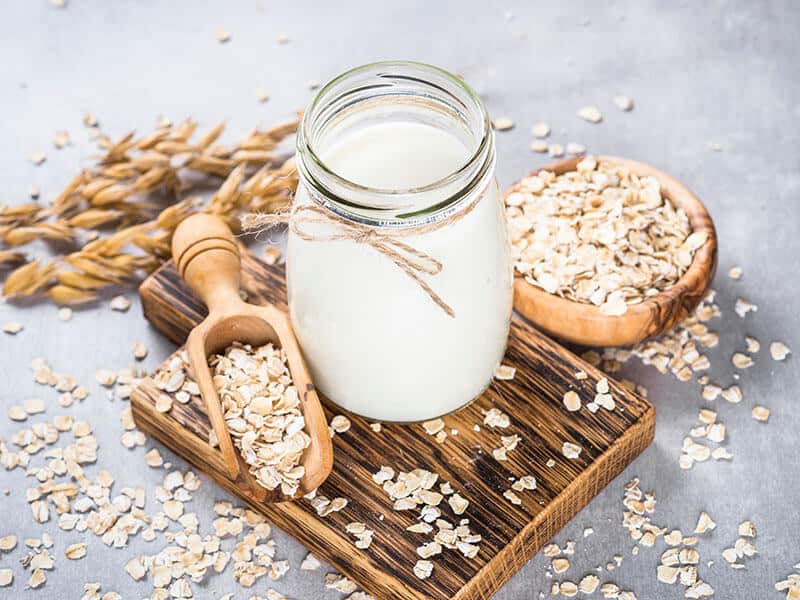
A great option for people allergic to lactose is here! Dairy-free oat milk will give you excellent macaroni and cheese with healthier content (1) .
Although it looks thicker, it does not make your dish creamier. You can exchange it equal to the amount of milk you intend to use and do not need to add thickeners for the usual mac and cheese texture.
The only difference: oat milk is sweeter than milk because it has more natural sugar. But do not worry, it is just a little! To be sure that no one will notice the change, you can ultimately use unsweetened oat milk. Good tip!
2. Almond Milk
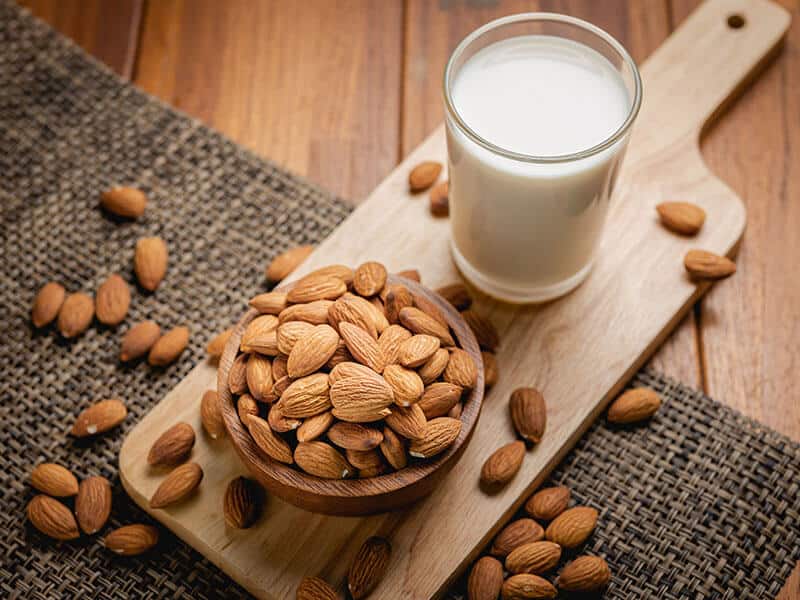
One of the dairy-free alternatives in mac and cheese, I especially love almond milk. First, almond milk is nutritious; second, I can barely discern its substitute! You just need to use the same amount of almond milk instead of regular milk.
Like oat milk, almond milk is also sweeter but still neutral enough to replace milk. You can always opt for the unsweetened version to keep the original flavor.
The point here is almond milk has a less creamy texture than regular milk, so you may want to add more cheese, flour, or butter to thicken the sauce and create a smoother, creamier texture.
Another thing to note is that almond milk has a highly distinctive almond flavor. That flavor will somewhat stay lightly on your mac and cheese, but you are free to try it out to see if you like it or not!
3. Cashew Milk
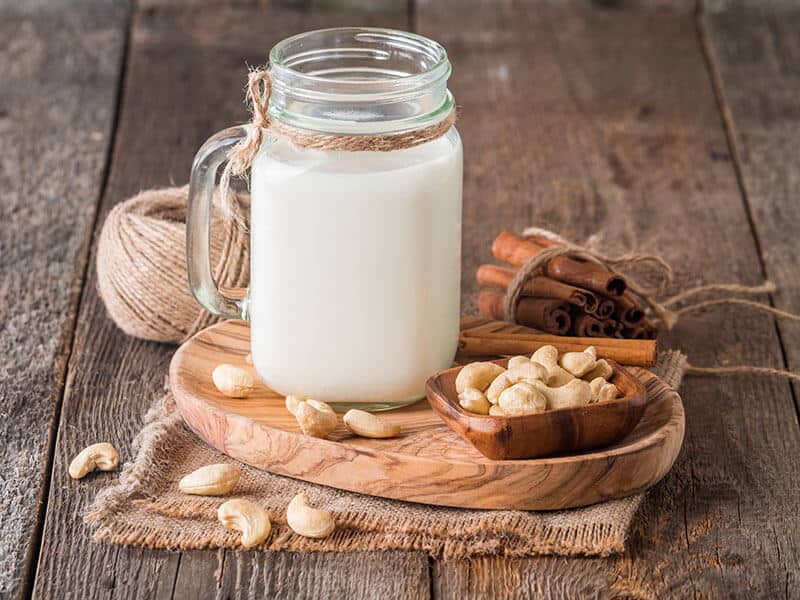
Compared to almond milk, cashew milk is less sandy and less sweet. This milk tastes almost like regular milk so that it would be a good substitute. If you do not like a little sweetness, no sugar cashew milk will be the right choice.
And good news for those who like creamier texture: cashew milk will help you do this because it has a thicker consistency than milk. You just need to substitute by 1:1 ratio to create creamy mac and cheese that blends seamlessly. No one will notice the difference.
However, you should note that nut milk, such as almond milk and cashew milk, is not suitable for people with nut allergies. Therefore, you can consider the nut-free alternatives in this list.
4. Soy Milk
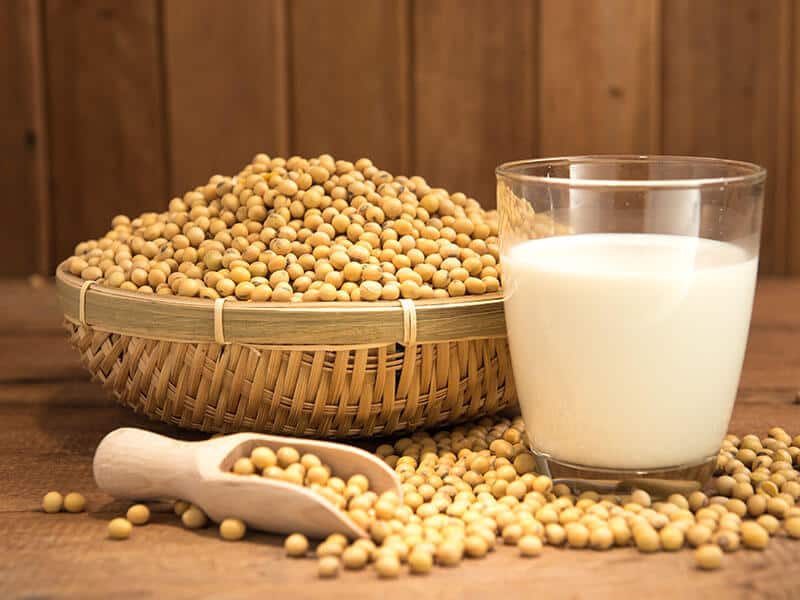
Do you not like sugared mac and cheese? Plain soy milk is the best non-dairy alternative to milk due to its light-flavor. Replace regular milk with soy milk with the same ratio, and you will find your favorite modest flavor.
Be sure to choose unsweetened and unflavored soy milk. Otherwise, the flavor of your mac and cheese will be a bit weird when finished. For example, some soy milk contains vanilla which is not a good choice since its flavor is too strong.
Unflavored soy milk may have a less intense flavor than conventional milk, but you can always add a little butter and salt for a better taste. Just balanced with additional ingredients, it will satisfy anyone.
Besides, although soy milk is more creamy than almond milk, you can still use a thickener if you love a creamier mac and cheese texture. You can also use a more aromatic and decadent cheese to create a thicker flavor.
5. Quinoa Milk

You may not hear about this milk so often, but quinoa milk should absolutely be included in this list. It has a slightly sweeter and fattier flavor than regular milk, with a subtle hint of quinoa flavor.
That flavor creates a fascinating balance when used in mac and cheese recipes. Quinoa milk’s taste is also neutral enough to match the cheese and cause no contrast.
To get the perfect creamy mac and cheese, you can replace regular milk with quinoa milk in a 1:1 ratio. And also, pay attention to choose the sugar-free type if you do not want it to be sweeter.
6. Hemp Seed Milk
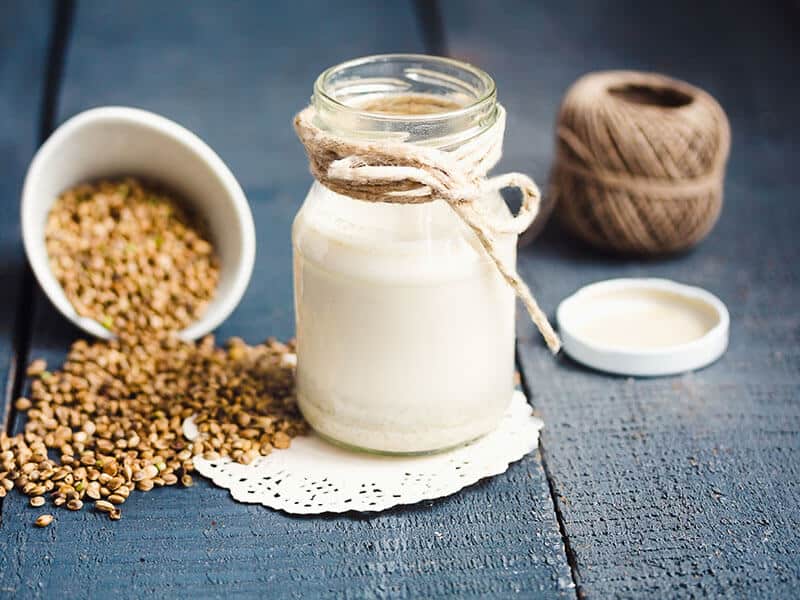
Recently, people started to use hemp seed milk more because it is full of nutrients, even suitable for those with lactose and gluten allergies. What’s more, it tastes incredibly nutty! It sounds like a great candidate to replace milk in your mac and cheese.
Not only does it have a fatty flavor, but hemp seed milk also creates a beautiful sauce texture thanks to its thick and creamy nature. You may want water to rebalance this too-consistent sauce. So, consider using a smaller amount of hemp seed milk than regular milk.
I recommend you substitute hemp milk at a ¾:1 ratio. As a side note, if you like mac and cheese with sweetened milk, you will probably find hemp seed milk a bit bland and sometimes bitter. You can always add sugar or honey for a perfect recipe!
7. Rice Milk
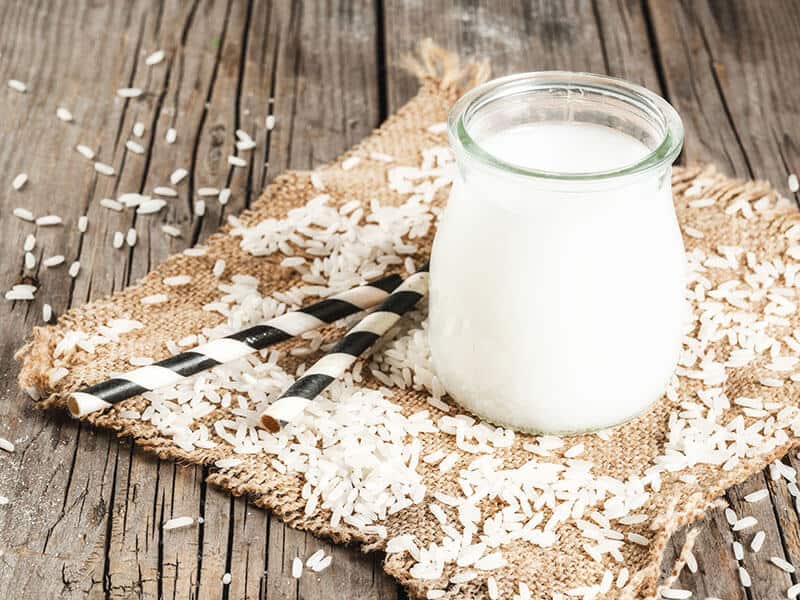
It can be said that rice milk has the most similar flavor to regular mac and cheese milk. Even the pickiest of people will have a hard time seeing its substitute in your recipe. The ideal ratio for this alternative is 1:1.
The taste is similar, but the consistency of rice milk is very different from milk. It has a more watery texture than regular milk and may not create the actual mac and cheese’s creaminess.
Do not worry! This is utterly fixable by adding thickeners or simply adding extra butter and cheese to bind the mac and cheese sauce and create a richer flavor.
8. Coconut Milk/Cream
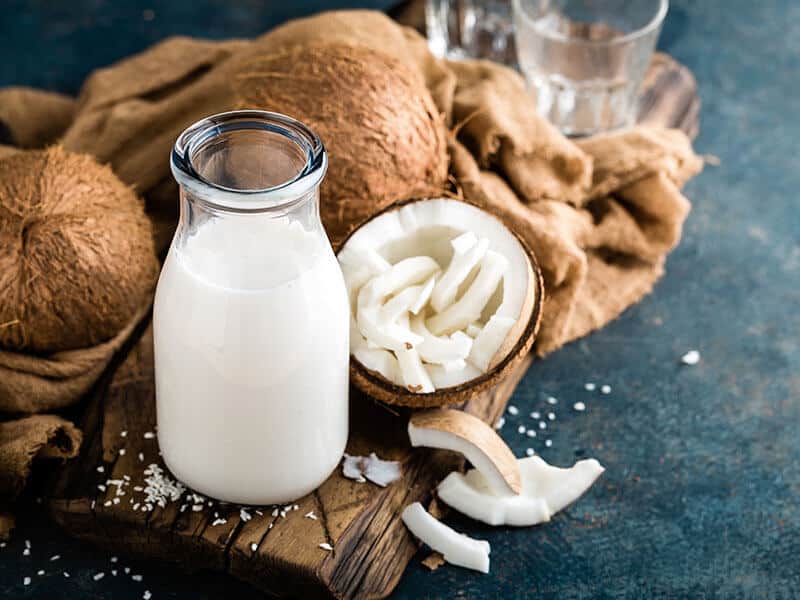
A dairy-free plant milk may be your favorite: coconut milk. Of course, it has a distinctive coconut flavor that will linger on your mac and cheese plate. That aroma is relatively pleasant, and you will probably like it.
However, if you want this coconut taste to fade, simply add your favorite seasonings. It would be best to opt for unsweetened and fat-free coconut milk for the best flavor.
About the creaminess, coconut milk will be thicker than common milk. Just use the same ratio as milk according to your regular mac and cheese recipe.
Besides, coconut cream is also a good option if you want your mac and cheese to be more consistent. This cream is thinner than other creams but thicker than coconut milk. Just pour gradually into your sauce and try diluting it with water if you find it too creamy.
9. Pea Milk
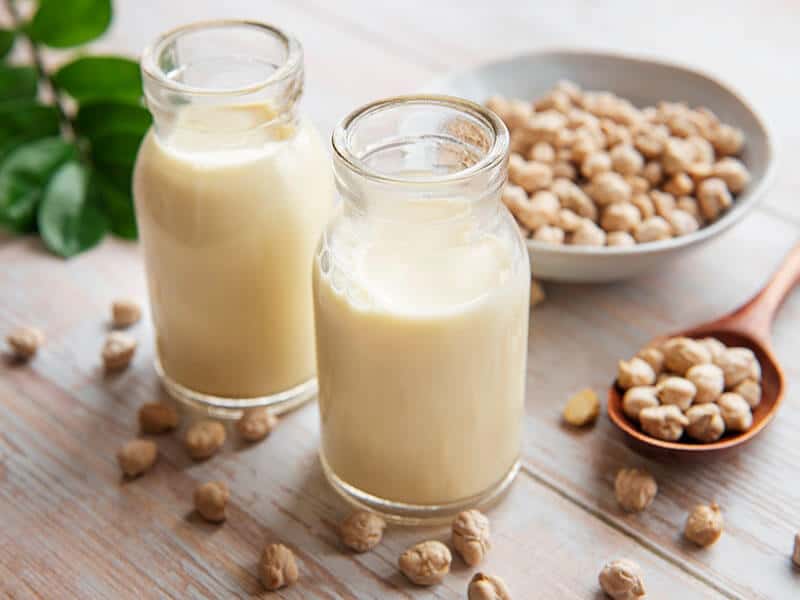
The taste of pure pea milk is somewhat like soy milk, but it has a slightly bitter taste. However, this hard-to-drink taste will be completely overpowered if you add more cheese to your recipe.
Pea milk is a healthy alternative to dairy milk thanks to its high protein content. 100g pea milk contains up to 3.33g protein (2) ! It is such an excellent alternative for cow’s milk.
Just replace the same amount of regular milk with pea milk to get the same mac and cheese. The texture can be creamier, and you may feel a little floury and chalky in the sauce.
10. Macadamia Milk
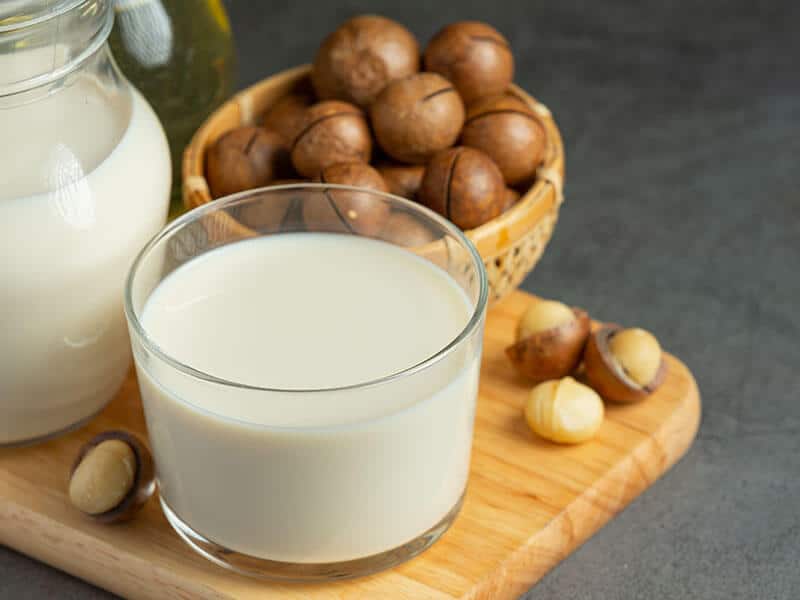
Macadamia milk is not much different from common milk, however its taste is a little lighter and buttery. Its consistency is almost like milk, and maybe a bit less creamy than skim milk.
Since the taste and consistency are relatively similar, you can use the similar amount of macadamia as regular milk with the 1:1 ratio. Consider flavoring it with cheese, butter, or other seasonings if you find it a bit bland.
11. Goat Milk/Cheese
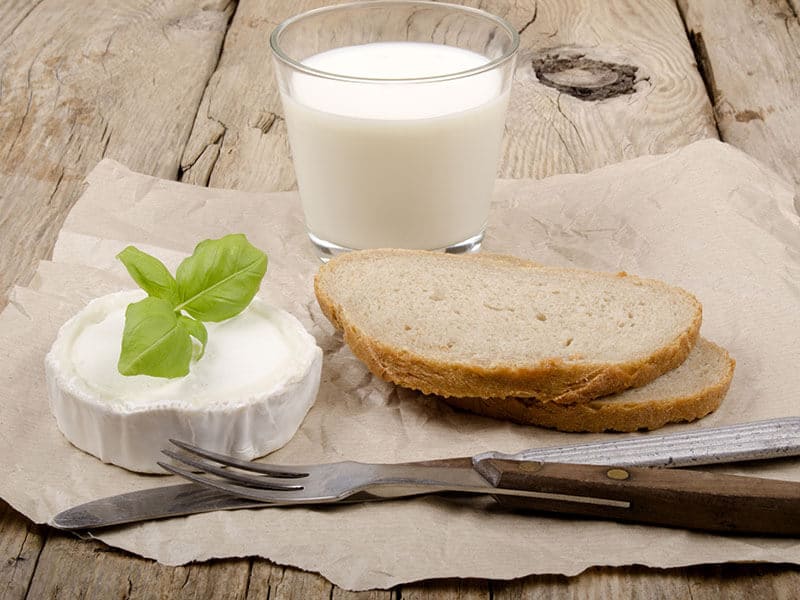
If cow’s milk makes you hard to digest, why not try a healthier dairy-based milk? Goat milk has become more popular lately since it is much easier to digest than cow milk thanks to its low lactose content (3) . Try a healthier mac and cheese with goat milk!
This is an excellent choice as goat milk has a taste and texture similar to cow milk. However, there is a slight difference: goat milk is lighter and less tangy, which you may notice in your mac and cheese sauce.
Just use a goat milk amount equal to the usual amount of cow milk. A good tip you can apply is to try goat cheese. Goat cheese has a richer and tangier flavor than goat milk, giving a batch of mac and cheese sauce with the most similar flavor as cow’s milk.
12. Powdered Milk
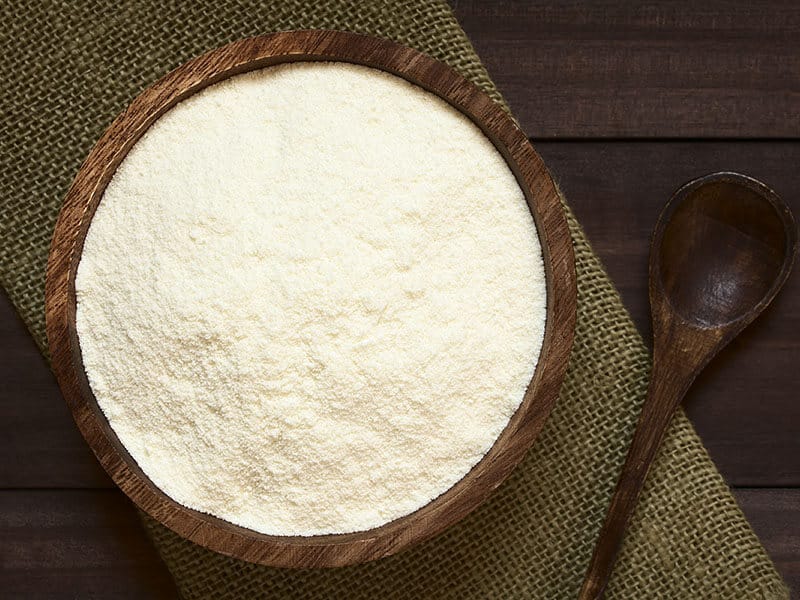
You suddenly ran out of fresh milk? Powdered milk is a great substitute if you have one in your kitchen cupboard. It has a richer taste and is also sweeter than regular milk, but this is easily balanced out by the salt used in the mac and cheese.
You can prepare the warm water equal to the amount of milk you normally use, then add a few tablespoons of powdered milk until you get the texture you want.
Moreover, with powdered milk, you can adjust the consistency of the mac and cheese sauce to your liking. This means you only need to add more milk if you want it thicker and more water if you want it thinner!
13. Evaporated Milk
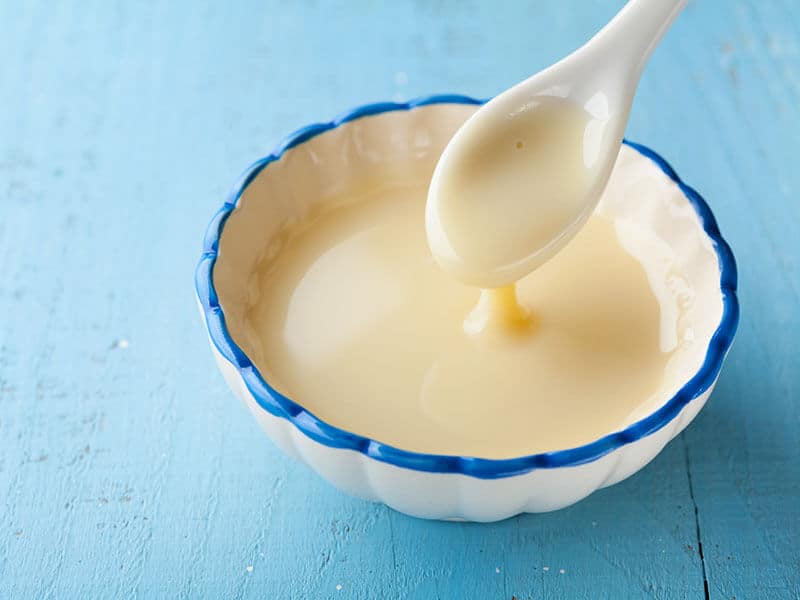
Evaporated milk even works better than powdered milk for mac and cheese recipes. It has a thicker texture than standard milk to create an exciting sauce. You will quickly achieve a creamier texture when using evaporated milk.
Just like powdered milk, you need to mix evaporated milk with warm water to use for mac and cheese. The ideal ratio here is 50% water and 50% evaporated milk, and this should be about the same amount of regular milk you would normally use.
However, evaporated milk is a bit sweeter than powdered milk, so you can find ways to balance the sugariness with other spices or simply with water. Blend it comfortably until you find your best taste!
14. Other Dairy-Based Milk
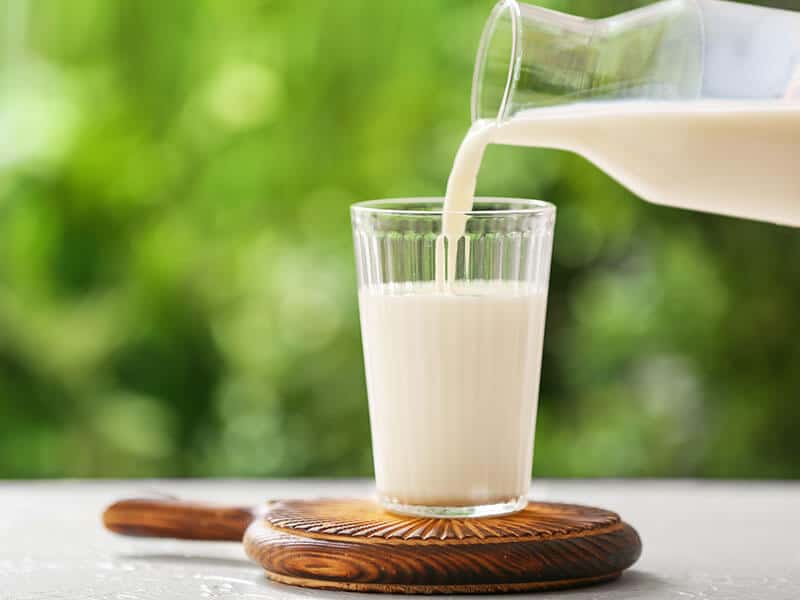
Other dairy-based milk is also ideal as a replacement for cow’s milk in mac and cheese, like sheep or camel milk. Although they are all milk, each type has its own unique flavor. Find out if you like the taste before you buy too much!
These types of dairy-based milk usually have a more pungent taste and are less tangy than cow’s milk, but the thickness is mostly the same. Therefore, stick to a 1:1 ratio like regular milk in your mac and cheese recipe.
If you find the flavor of these kinds of milk too strong, you can neutralize it by diluting it with water and adding cheese to increase the creamy texture. You should also add aromatic seasonings like garlic or herbs.
15. Sour Cream
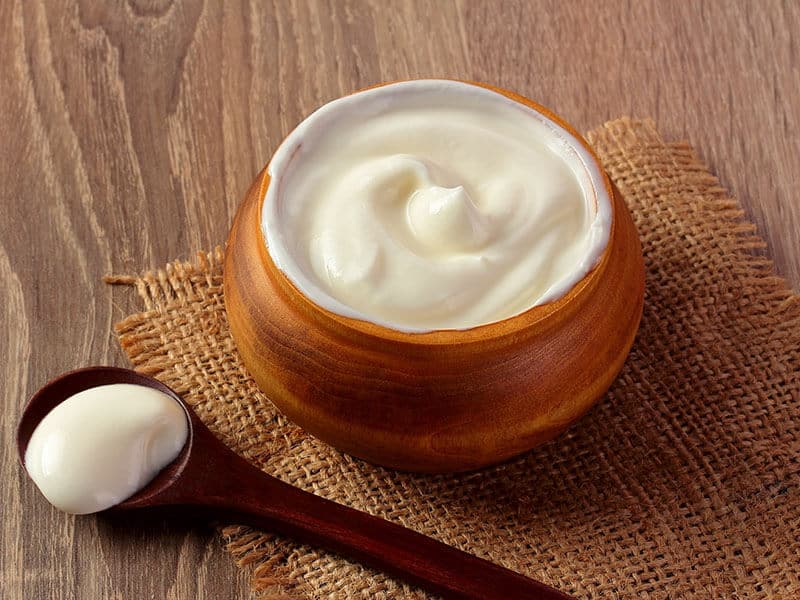
Sour cream is a good candidate for replacing milk if you want a thicker texture and a more tangy mac and cheese flavor. It is many times denser than milk and even a little more consistent than regular cream. If you want to balance out the texture, mix some water with the sour cream.
It gives off a seductive aroma when combined with mac and cheese. The taste of sour cream is naturally slightly acidic, and surprisingly, this is an exciting addition to the sauce. The only significant difference to note is that sour cream provides more fat and calories than milk.
You should start with the ratio 1:1 and gradually add more as needed. If you find it too sour, add some dried herbs or minced garlic to balance out the flavor. A good tip is to use both sour cream and milk to make the best mac and cheese next time!
16. Whipping Cream

For those who prefer mac and cheese with a thicker sauce, whipping cream will be an extremely attractive alternative! You can also use double cream and whipping cream interchangeably with the same amount as milk, but remember that double cream is much thicker and can be difficult to spread evenly.
Just like sour cream, whipping cream has a sustained texture and contains more fat than regular milk. It will also make the mac and cheese extra creamy and decadent. So just use a small amount and slowly adjust to get the right texture.
The color of the macaroni sauce may be lighter when you use whipping cream, as it is too white. Besides, you may consider removing the butter since this substitute itself is already quite fatty and dense. And you can totally add water if you feel your mac and cheese is too sticky!
17. Cream Cheese
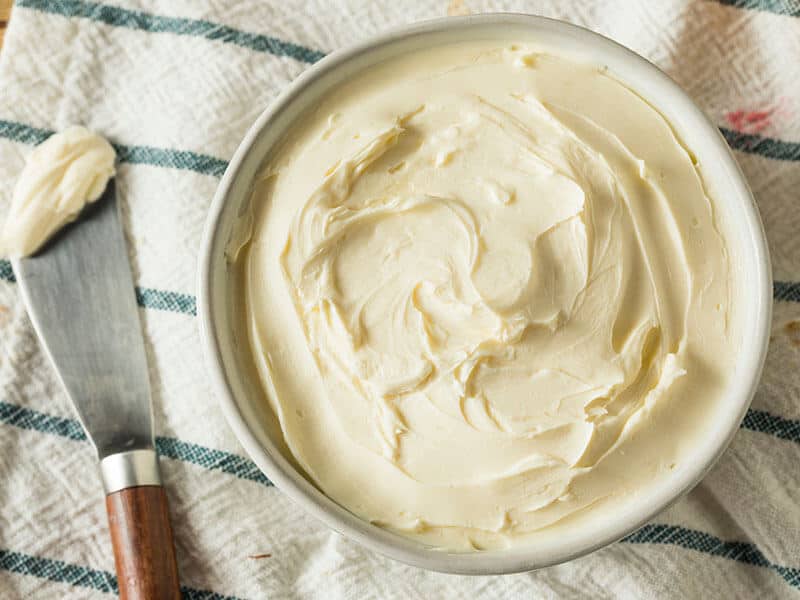
No milk is okay if you already know this optimal optionI can say that cream cheese is a virtually perfect substitute for milk when it comes to taste. Cream cheese is slightly sweet, not too sugary like other alternatives. It almost tastes like milk!
The only difference between milk and cream cheese is the creaminess. Of course, you know which is denser. Cream cheese will be an excellent alternative for your macaroni if you like extra thick and double cheese sauce.
In terms of proportions, replacing milk with 1:1 cream cheese will be the best choice. Just remember to melt the cream cheese before adding it to the sauce. Cream cheese is also already thick and creamy so that you can reduce or omit the butter from your recipe.
18. Shredded Cheese

Even when milk is available, I still like to use shredded cheese for my mac and cheese. As such, it has become my favorite milk alternative. This substitute brings a wonderful cheesy taste to this recipe.
Besides, the cheese will also make the sauce creamier, but not too thick to cause trouble. Because it is shredded, the cheese also melts easily when added to a regular recipe.
The ideal ratio for substituting milk by shredded cheese is about 1:1. You can use any hard cheese, whether it is parmesan or cheddar. They all work great with mac and cheese.
19. Plain Yogurt
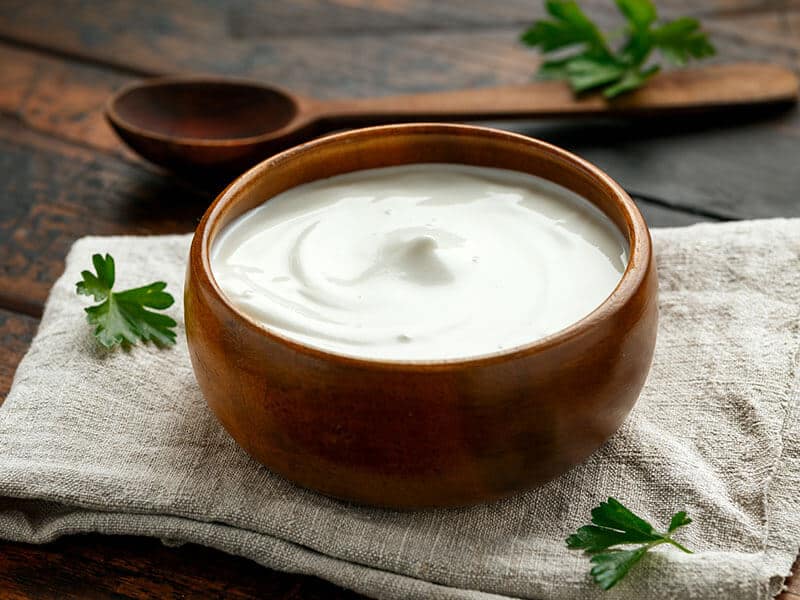
I have mentioned sour cream before. Plain yogurt is pretty much the same in terms of both consistency and flavor, somewhat even tastier and smoother.
The significant advantage of using plain yogurt instead of milk is creating a silkier and thicker mac and cheese sauce. Its sour taste also goes well with this recipe when neutralizing the fat of the butter.
The excellent ratio to replace milk with plain yogurt is 1:1. You can use plain Greek yogurt for the best results. Choose a low-fat variety, thaw constantly stir, so the yogurt does not separate.
20. Chicken Broth

This option might sound a little strange to you, but it is entirely possible! The chicken broth will be a savior in case you are allergic to milk or want to limit dairy products.
Naturally, both the taste and texture of your macaroni will be different. I think you should try a small amount to see if you like it or not before making a big dish. This is also the way to gradually get the texture you want.
The vast difference you will get is a much thinner sauce (since the chicken broth is actually more watery than milk). Try double butter or cheese, or add some flour for a more pleasing texture.
21. Butter
If you do not have any alternatives left in your kitchen cabinets, choose butter! This solution is simple yet effective for your macaroni and cheese sauce. You will have a creamy texture and a fatter flavor.
The ideal ratio of butter to milk for this recipe is 1:2. Remember that butter means so much fatter than milk, and you may want to add water or seasonings to neutralize this flavor!
22. Roux
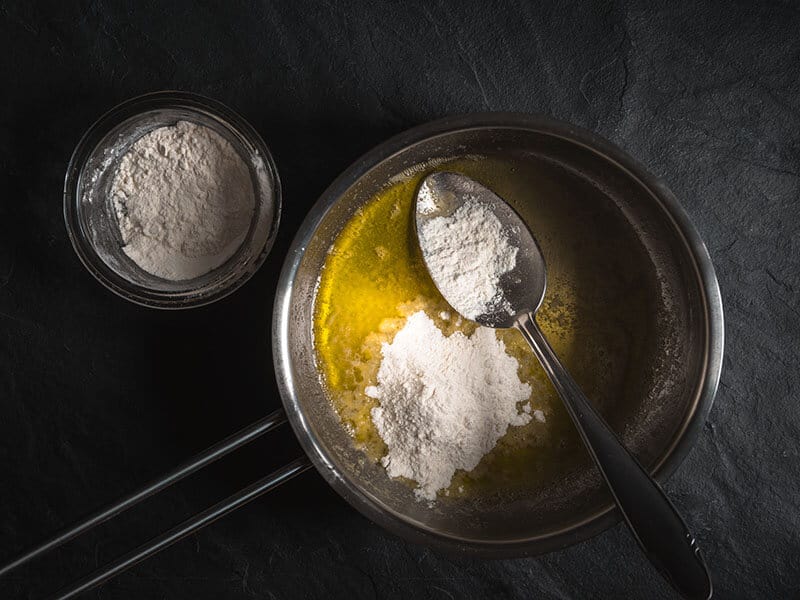
Roux is a mixture commonly used to thicken sauces. I quite enjoy using it to replace milk in mac and cheese since I love its consistency. To make the sauce, you will need 2 tablespoons of flour and whisk. Pour them into 2 melting tablespoons of butter and continue cooking for 1 minute.
The roux’s taste is a bit lighter than butter, but still richer than milk. You will get a creamier texture when using roux instead of milk. Besides, it can be assumed that most flavors of the mac and cheese will remain unchanged.
To make a roux, you need to melt the butter, then mix in an equal amount of flour and continue to melt and mix until the liquid is smooth. Then add your mac and cheese and mix well with this roux mixture.
23. Olive Oil
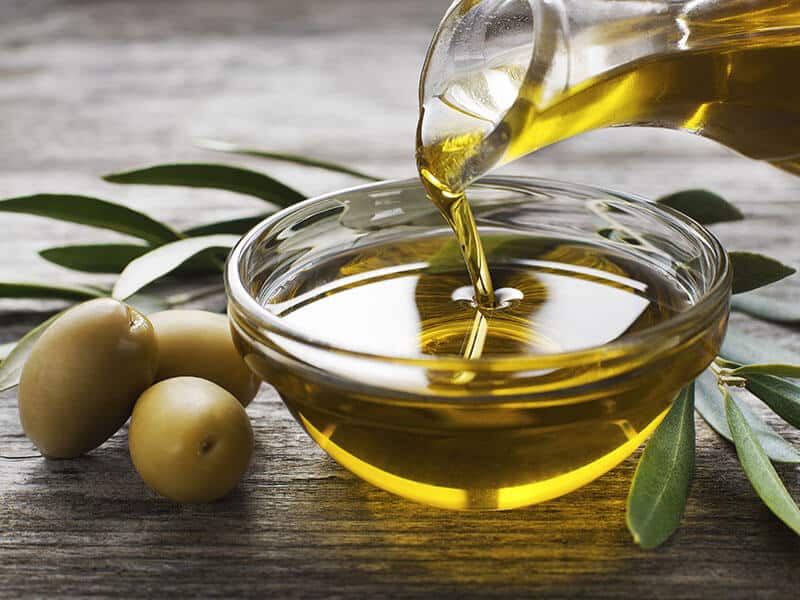
It may sound uncommon, but if you like the taste of olive oil, you can still use it to replace milk in your mac and cheese recipes. But you should only use it in case none of the above options are not available, I suppose!
The flavor will mostly remain the same, but be aware that using olive oil means that your sauce will be a bit oily due to the texture of the oil. Therefore, be careful not to overdo it when adding the oil. 1:1 ratio is a bit much, so you should consider adding it slowly.
The trick is to add a tablespoon of olive oil along with the other ingredients. Then, mix well until the butter and cheese powder are combined with the oil to form a smooth sauce.
If the ingredients are still not completely dissolved, add one more tablespoon of oil and continue stirring until your desired texture is achieved.
24. Half-And-Half
Half-and-half is a half whole milk thickened with a half cream. It has an extremely similar taste to regular milk but slightly richer, so it is useful in case you like creamier sauce!
Instead of milk, you can make mac and cheese sauce by mixing 3/4 cup Half-and-half in 1/4 cup water. With that ratio, it will have the consistency of whole milk and the closet taste. Make half-and-half as the common milk amount in your recipe.
Remember that the fat content in Half-and-half can be very high compared to regular milk (about twice), so you can omit the extra butter or cheese commonly used in mac and cheese.
25. Pasta Water
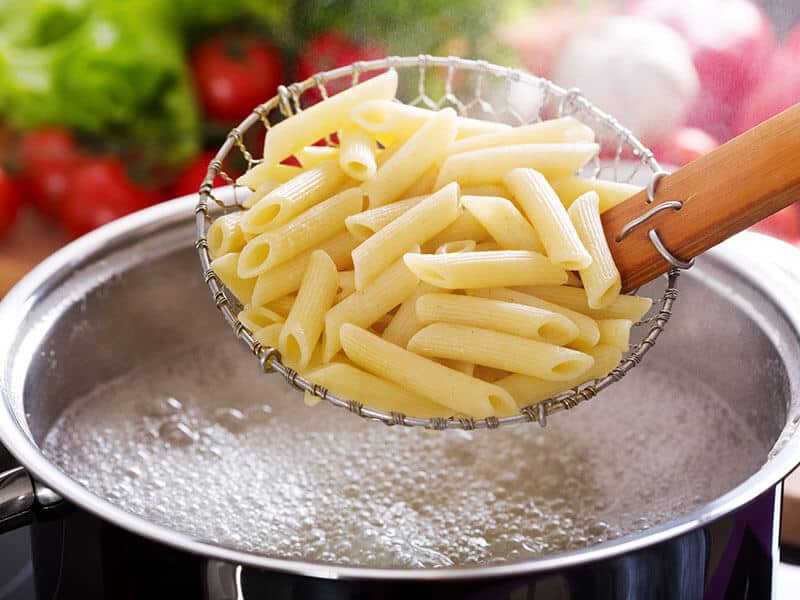
Pasta water is also a great substitute you should use since it has a certain consistency due to the starch in pasta. It is simply the water you retain after boiling the pasta, with an opaque color and a slightly pasty texture.
You just need to add a little more water when boiling macaroni and continue to keep that pasta water to make the sauce instead of filtering as usual. The pasta water you need should be half the amount of regular milk. Add more cheese and butter if needed.
26. Water

And water is your final reluctant choice! You will have macaroni and cheese with less flavor, less fat, and less consistency! But do not worry, it is also less heavy! Try to double butter, cheddar, and flour to make the sauce thicker and easier to eat.
Make sure to carefully consider the amount of water to avoid making a pot of mac and cheese soup! You should only use enough water to dissolve the cheese – the main ingredients of the sauce. Consider adding more seasonings to avoid a too bland and watery sauce.
You can mix several milk substitutes to make the best tasting mac and cheese!
FAQs:
You can find some more interesting information about milk alternatives for mac and cheese below:
Discover Your Favorite Milk Substitutes In Macaroni And Cheese!
Now you have all the best options for replacing mac and cheese milk in any case. You can always try again and again to discover your favorite recipe!
This article is helpful, right? Share it now with macaroni and cheese lovers! And what are you waiting for? Follow me so I can share with you more useful cooking knowledge!
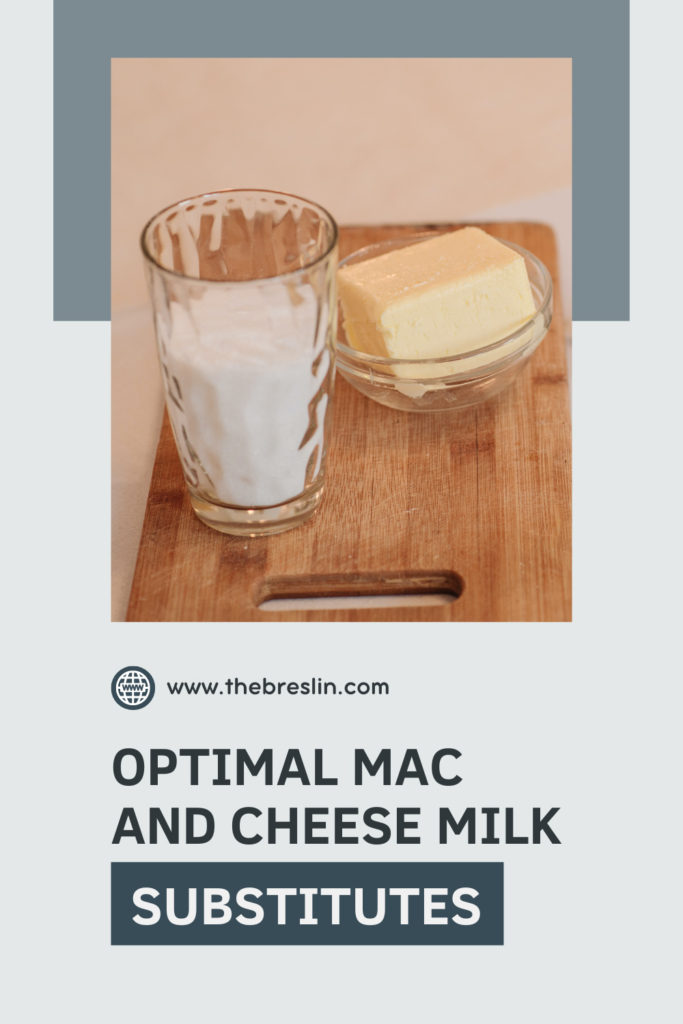
References
- Team, F.H.,. Is oat milk healthy? Cleveland Clinic.
- Anon, Fooddata Central Search Results. FoodData Central.
- Stergiadis, S. et al., 2019. Comparative nutrient profiling of retail goat and cow milk. Nutrients.


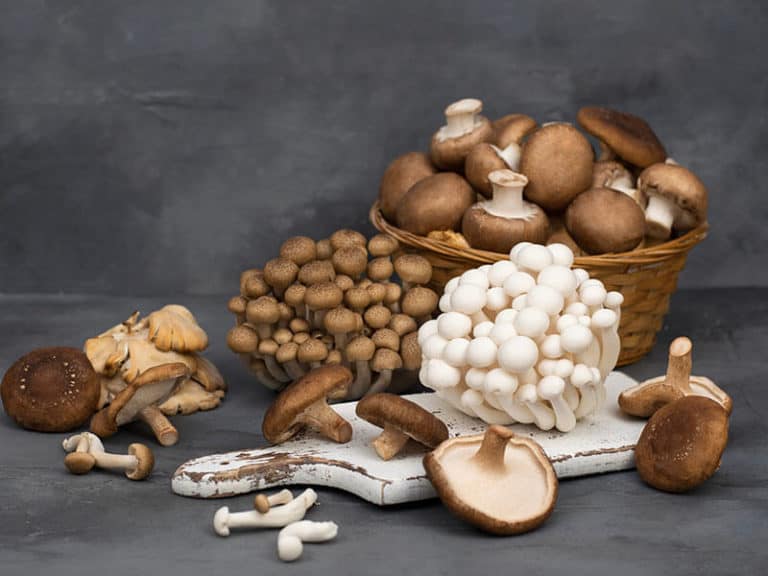
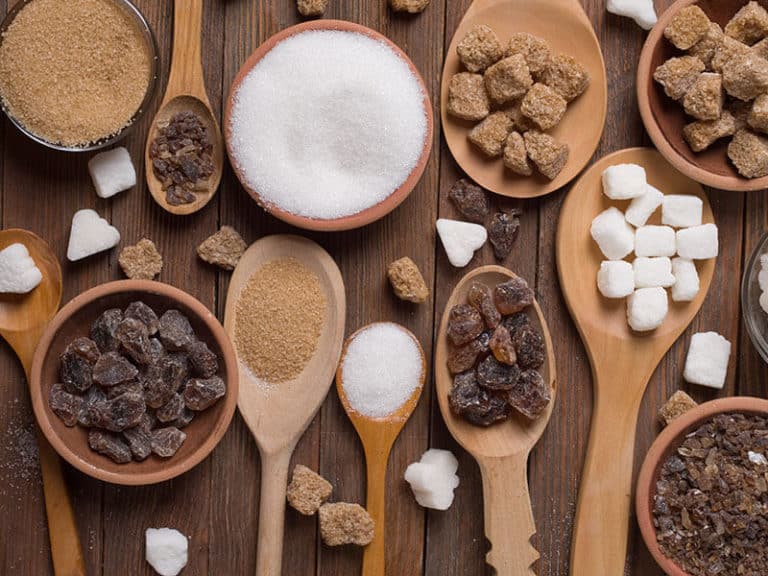
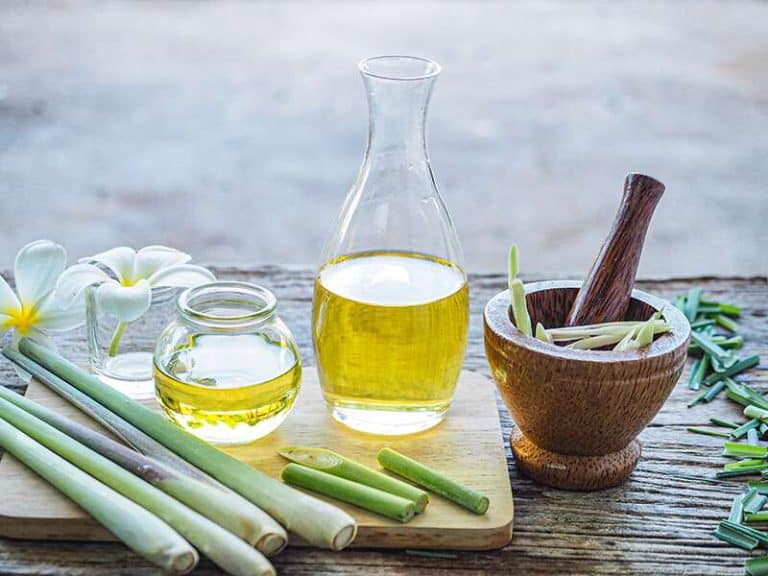
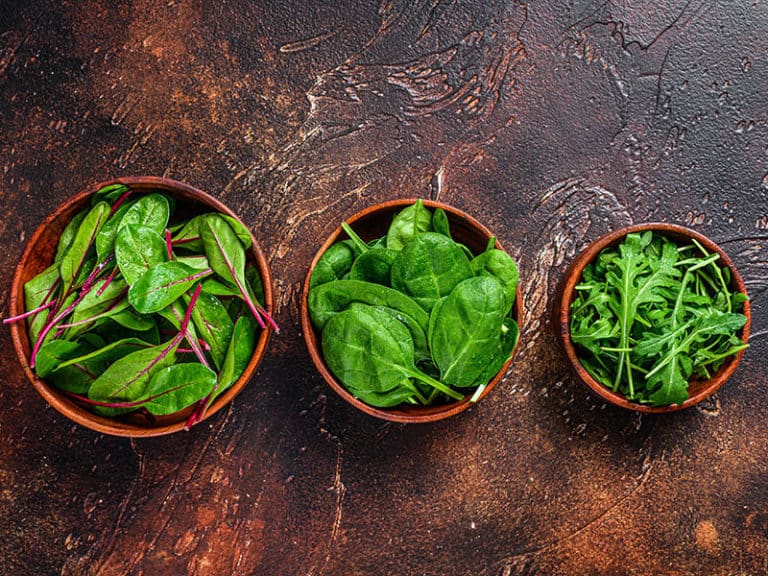
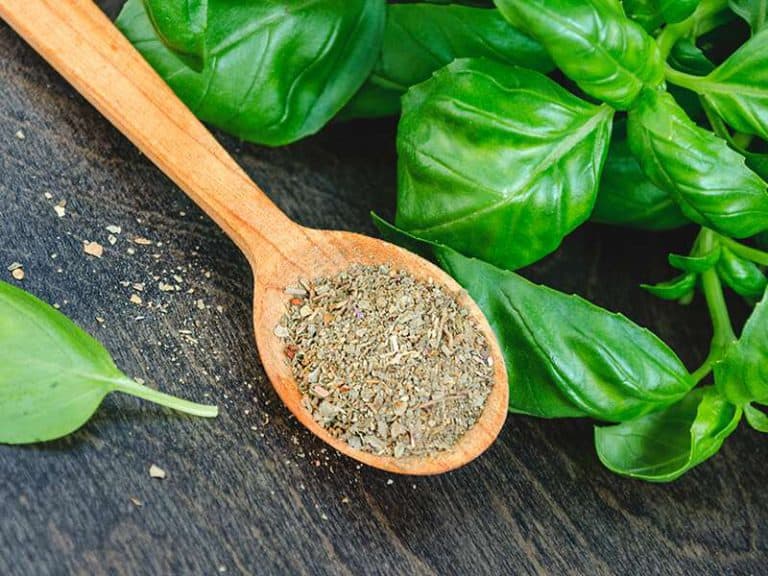
Amanda Collins
Founder and Senior Culinary Editor
Expertise
Culinary Arts and Management, Food Journalism and Critique, Recipe Development and Testing, Global Culinary Traditions, Sustainable Food Practices
Education
Institute of Culinary Education (ICE), New York, NY
Program: Diploma in Culinary Arts
Focus: Intensive hands-on training in culinary techniques, recipe development, and kitchen management, preparing students for professional roles in the culinary industry.
Monroe College, New Rochelle, NY
Program: Associate in Applied Science in Culinary Arts
Focus: Practical culinary skills, including cooking techniques, menu planning, and kitchen operations, with an emphasis on hands-on experience and industry standards.
Amanda Collins is a seasoned chef and food editor with a deep love for global flavors. Trained at the Institute of Culinary Education and Monroe College, and with over 15 years in the culinary field, Amanda has refined her skills in kitchens worldwide. Her background in food studies gives her a unique ability to share both recipes and the cultural stories that shape them.
As senior culinary editor at thebreslin.com, Amanda’s work brings authentic dishes to life, inviting readers to explore new flavors and techniques from around the globe. Her approachable style makes it easy for anyone to bring a bit of the world’s cuisine into their kitchen.